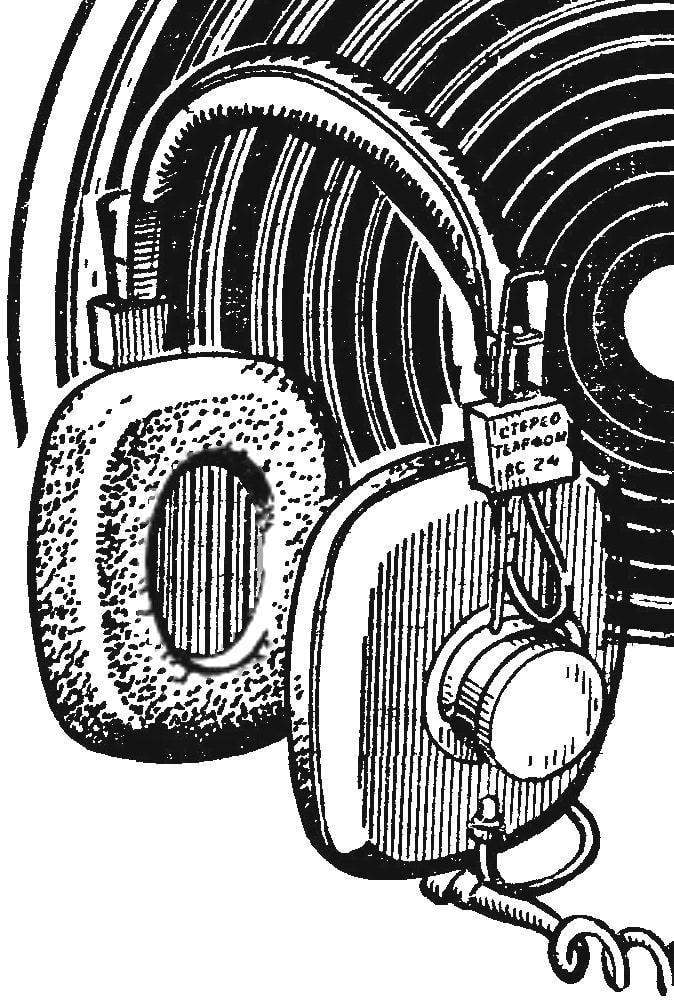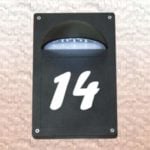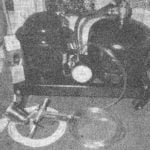 In high quality stereorelease made on the basis of heads 0,25 GD-10-290 from small radios. Their advantages are a wide frequency range, small harmonic distortion comfortable ear cushions earpads, good isolation from extraneous noise and beautiful appearance.
In high quality stereorelease made on the basis of heads 0,25 GD-10-290 from small radios. Their advantages are a wide frequency range, small harmonic distortion comfortable ear cushions earpads, good isolation from extraneous noise and beautiful appearance.
First of all select the head: check for interference of the coil and there are no rattles. Preferably, the head was with the closest values of resonant frequency: the coincidence of the form of frequency characteristics of left and right phone is important for the quality of the stereo device.
The diffuser head is composed of two bonded parts: conical and domed. It creates lift at the frequencies 3000-4000 Hz. This was done deliberately to improve the sound of portable receivers.
In stereorelease rise at these frequencies is not necessary and even harmful. So head should be slightly changed: to remove the dome, cut it carefully with a razor blade. And in return set 0 30 mm cone with a cone angle of 120°, glued dense thin paper. It is impregnated with glue BF-2, thoroughly dried, and then glued directly to the frame of the voice coil of the head (Fig. 1). Cone expands the range phones frequencies to high values.
The designer will have to solve two tasks simultaneously: to “stretch” the frequency range to the highest possible and reduce the unevenness of the sound pressure.
The key to solving the first problem in the reduction of the weight of podlesna system and increasing the rigidity of the diaphragm. The mass of the moving system is composed mainly of masses of the voice coil and the diaphragm. The last is made from materials with small specific gravity, it should be very thin and the minimum diameter, but such that its value does not affect the efficiency impact of low frequencies. The stiffness of the diaphragm is determined by the material and profile and the radius of curvature of the generatrix. If rigidity is insufficient, since a certain frequency, the diaphragm ceases to vibrate as a single unit. Emerge vibrating in different phases separate areas, which worsen the impact of the diaphragm at high frequencies and increase the unevenness of the characteristics. There are phones in which the diaphragm is made of plastic, for example polyamide. Diaphragm Ø 60 mm made of this material weighs about 120 mg, and paper made from this mixture is about 300 mg. the voice coil will be much easier if the coil is wound aluminum wire.
Have phones the unevenness of the sound pressure at high frequencies much more than low to medium. When the wavelength becomes comparable with the dimensions of the cavity formed by the ear and the phone, there are reflected waves that are being imposed on straight, create peaks and dips in the response. To reduce the effect of this phenomenon, using sound-absorbing material (e.g., foam). which dampens vibrations that are reflected from the head of the listener and the body of the phone.

Fig. 1. Head:
and alterations, b — after the alteration; 1 — cupola, 2 — diffuser, 3 — cone, 4 — voice coil.
Sometimes to improve the HF characteristics in high-quality stereorelease used two or more air chambers, the biasing front side of the diaphragm. Chambers filled with sound absorber and are connected by annular slits.
After installing the cone on the perimeter of DiffuseMaterial glued o-ring, cut from microporous rubber with a thickness of 3-5 mm. External diameter — 62 mm, inner 56 mm. Cutouts of DiffuseMaterial stick with the thin cloth that protects the diffuser from contact with located inside the housing of the phone sound absorber. It eliminates the resonance phenomena at high frequencies and DAMPS the acoustic system.
At the resonant frequency the oscillation amplitude of the diaphragm increases, causing an increase in sound pressure. Without damping the resonance peak magnitude can be more than 10 dB. In electrodynamic head phones resonance usually occurs at frequencies of 400-2000 Hz. This is the region of greatest sensitivity of the ear, and any distortion is especially noticeable. Also poorly sedentiary phone has a poor transient response. He fully conveys the sounds of the pulsed nature (with sharply changing levels). This affects the quality of stereorelease: there are “overtones” that distort the original signal.
To smooth out the resonant “peaks” and have a good transient response, the phone will first seek to reduce the quality factor of the head (it should be close to 1).
Damping of headphones should be provided mainly through the construction of a mobile system. In some models a gap of the magnetic system placed a special lubricant such as a viscous silicone fluid. The coil is immersed in her part. Grease has high thermal conductivity, so the voice coil wound around a thin wire does not overheat.
The reproduction of low sound frequencies and ease of use of the phone is largely dependent on the design of the ear pads. They should be soft, elastic, fit snugly to the ear, thereby not only sealing, but also easy to use.
Ear pads made from foam, covered with leatherette. In some designs phones the ear pads are made in the form of impenetrable plastic bubble filled with a viscous fluid.
Between the ear and the diaphragm of the telephone is required a full tightness: the diaphragm and the enclosure must not leak air, and the ear cushions fit snugly to the head of the listener. In practice, the air leakage causes a decrease in sound pressure in low frequency region. At the same time there is an increase in the vibration amplitude of the diaphragm, which introduces additional distortion.
On the other hand, the massive ear cushions, providing greater airtightness, causing irritation and a feeling of deafness, overcrowding, especially during prolonged listening. So here we have to compromise between quality, ease of use and cost headphones.
V. SKLYAROV, engineer



